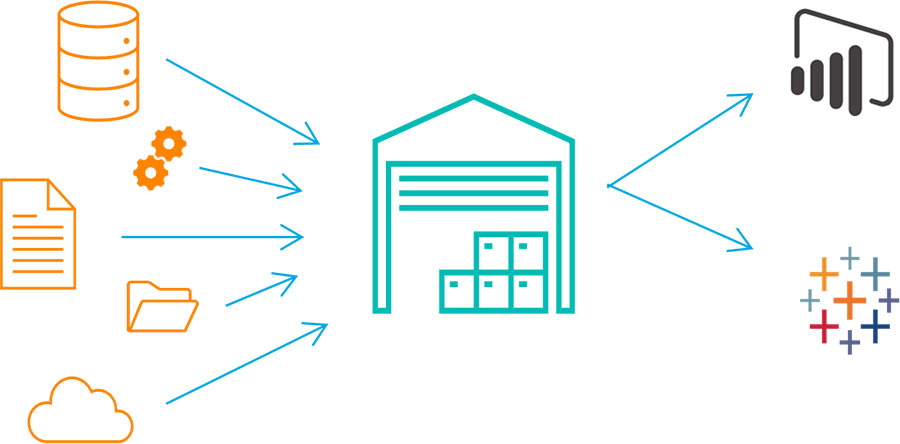Can you imagine driving a car without knowing how fast you are going or how much gas you have left? Common dashboards get us that information, but that is about it. Now imagine a more sophisticated approach. When your check engine light comes on, the dashboard shows you exactly what the problem is, how much it will cost to fix, and the locations of the most reliable auto shops in your area. Business intelligence (BI) makes that more sophisticated approach a reality for your fundraising operation. The effects of COVID-19 have proven the importance of agility. Having access to informative insights to make time-sensitive, data-driven decisions is the key to ensuring continuity during uncertainty. This past year highlights the critical role of an effective business intelligence strategy. While attractive dashboards are intriguing, the success lies with the foundation: data governance, scalability, buy-in, and education.
Data Governance
An effective data governance strategy ensures that data are standardized, secure, and scalable. While an effective BI solution simply cannot function without comprehensive data governance, data governance can benefit from BI. To create this symbiosis, organizations must start by creating a culture that embraces defined business processes to safeguard structured, secure, and clean data (check out The Importance of Data Governance in Remote Fundraising Operations by Joelle Clemons for an excellent guide to implementing an effective data governance strategy). Once governance is enacted, create measures to monitor standardization and policies.
THINK BIG, Start Small & Stay Focused
Think about the big picture; with terabytes of data from a myriad of sources, BI gives consumers the potential for enterprise-wide insights. It is important when considering a BI solution to identify all available data and the relevancy to the organization’s strategy. Large projects containing multiple sources often require data warehousing to process and create standardized layers from which the BI tool can efficiently pull. Data warehouses remove the burden of mass aggregation from the BI tool, drastically increasing performance.
While it is important to see the end goal, do not start with the entire scope in mind. Start small. Begin with identifying and monitoring the most impactful KPIs. Think of your BI tool as a living document that will evolve as your solution scales.
Stay focused by defining and sticking to a roadmap. While the accessibility of data is exciting, it is crucial to scale according to design. BI development that does not align with policy distracts users and can be harmful to executing the organization’s strategy. Every measurement and every visual matters—as we all know, what gets measured gets done. Poorly designed metrics will produce unintended and often detrimental results.

Create Buy-In
An important strategy to ensuring that BI is appropriately utilized is to involve key stakeholders throughout the design and implementation phases. From data-entry specialists to executives, consider forming a committee of team members who will most often be using the BI tools. You will quickly learn how invaluable their institutional knowledge is, establishing the right perspective for BI developers. During initial implementation and training, consider this committee your team of ambassadors, championing the product and lessening intimidation; you will see utilization of intended application greatly increase.
Create a Plan to Educate
To ensure users are employing the tools as intended, organizations must provide adequate initial and ongoing training. Many are naturally averse to change, and the best way to combat resistance is to provide as many opportunities as necessary for users to become comfortable with the BI tool. Let BI drive conversation. Encourage users to involve BI in presentations and meetings, in addition to normal day-to-day activities.
Deploying a BI solution can seem daunting. It is easy to lose sight of what is truly important: getting the right insights to the right people at the right time. Keeping this in mind helps with narrowing the scope and accomplishing what is most impactful first. For many organizations, up and running with BI does not entail terabytes of data flowing through an enterprise data warehouse with hundreds of views within the BI tool. It can simply mean one data source that contains the right information to produce actionable insights, populating only a few key dashboards. Successful BI is not more information; it’s the right information.
Curious how we can help?
Watch the recorded business intelligence demo or contact us today.




